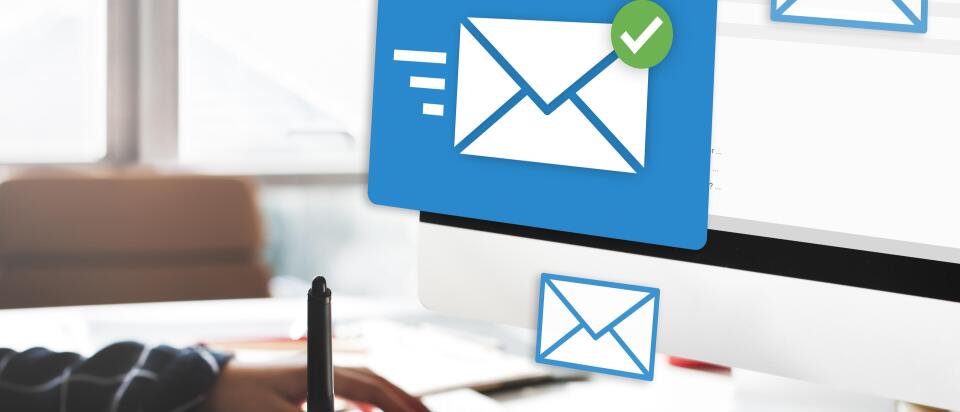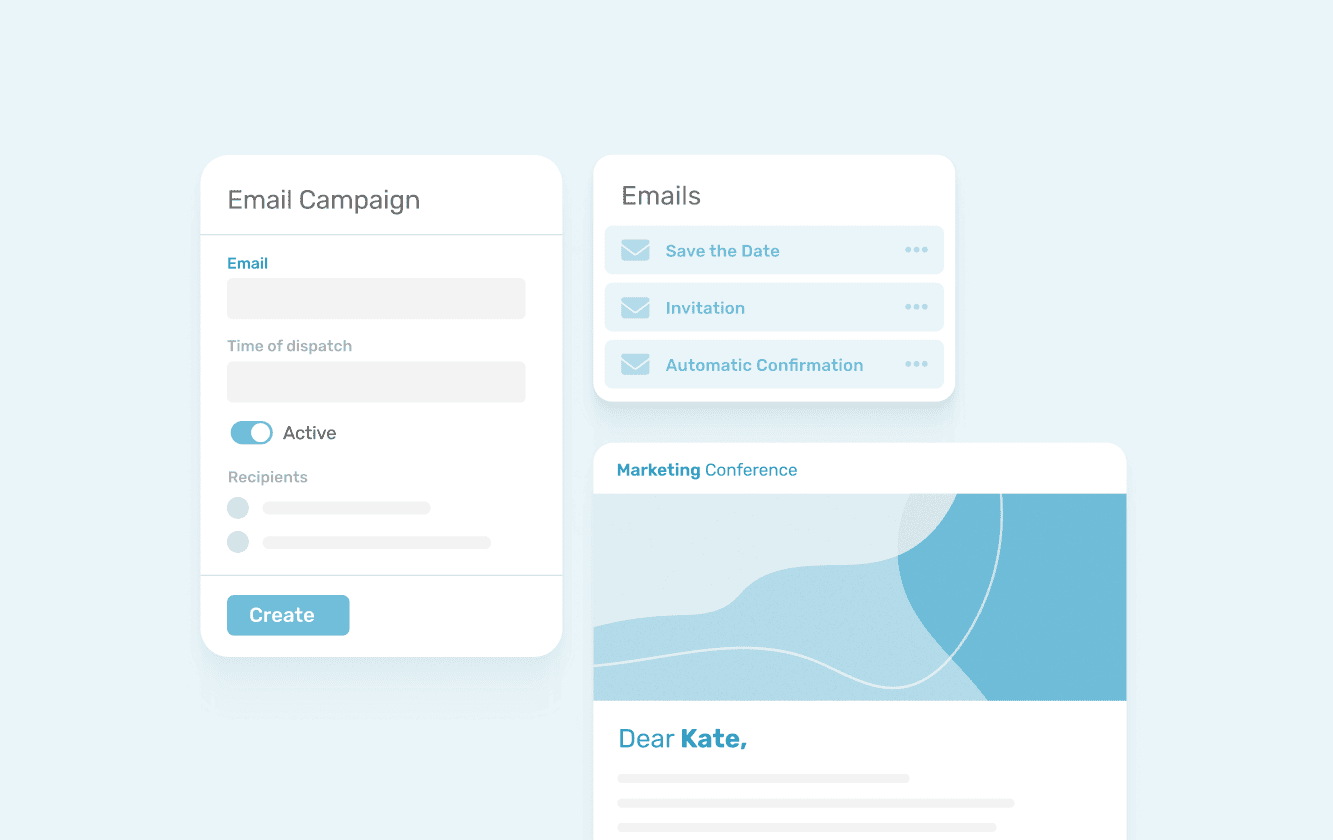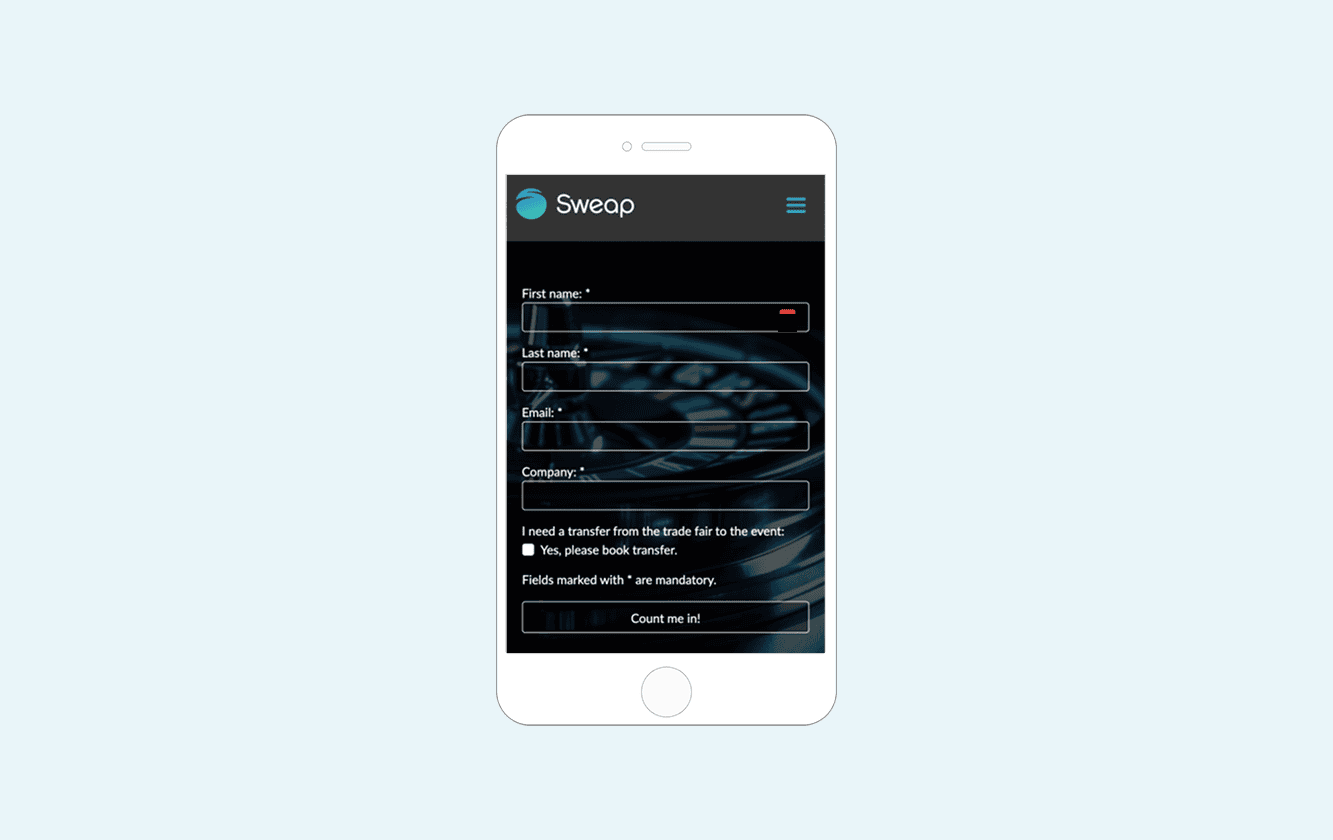
Event emails are a powerful tool to attract participants to your event, keep them informed, and foster long-term loyalty. But how exactly do you write the perfect event email? In this article, I’ll walk you through the process of creating compelling emails for your event - from initial planning to post-event follow-up.
With the right tools, you can save both time and money while optimizing participant management and measuring success.
Planning: Preparation Is Key
Before you start writing your event emails, careful planning is crucial. Only by knowing your target audience and the ideal time to send your messages can you run a truly successful email campaign.
Target Audience Analysis and Personalization
Who do you want to reach? A detailed segmentation of your recipients is the key to personalizing your emails. The more tailored your message, the higher the likelihood that your invitation will be read and positively received. Use tools that allow you to personalize your emails without taking significantly more time.
Timing and Sending Schedule
When should invitations, reminders, and follow-ups be sent? A well-thought-out communication plan is essential.
The Perfect Event Email: How to Grab Attention
You want an event email that immediately stands out - here’s how to make it happen.
The Salutation – The More Personal, the Better
Imagine opening an email that starts with “Dear Sir or Madam.” Sounds pretty impersonal, right? That’s why it’s so important to address your recipients directly. A personal salutation like “Dear Anna” or “Hello Max” instantly creates a connection and shows you value each participant.
Introduction – Spark Interest
Your introduction should pique curiosity and captivate readers right away. Instead of starting with dry facts, grab the recipients’ attention with an interesting question or an exciting scenario. For example:
“Imagine you could spend a day learning from the best in the industry while making valuable new contacts.”
The Facts – Clear and Concise
Of course, your event’s essential information must not be missing. The five W’s can help:
What is happening? (e.g., “Marketing Summit 2024”)
When is it happening? (Date and time)
Where is it happening? (Venue with a link to a map)
Who is speaking or performing, or which special guests will attend? (Names of speakers or special guests)
How can one register? (Registration link)
These details should be immediately visible so the reader doesn’t have to search for them.

All essential information at a glance
Main Body – Present Convincing Arguments
Use this section to convince recipients that they definitely shouldn’t miss your event. What makes your event unique? Which exclusive content or special guests will be featured? Make it clear why the reader needs to register.
Call-to-Action (CTA) – A Clear Prompt to Act
A clear and eye-catching CTA is vital. Use phrases like “Register Now,” “Secure Your Spot,” or “Only a Few Seats Left - Act Now!” Place the CTA button in a prominent spot and repeat it if necessary to maximize the chance of a response.
Reminder Emails: Stay Top of Mind
Scheduling
Your first reminder should ideally be sent about a week before the event, the next one-two to three days prior, and possibly a final reminder the day before. This keeps your event top of mind for participants.

Automated campaigns make your work easier during the planning phase
Personalized Content
Tailoring content for different audience segments is also useful here. Participants who have already registered might receive event reminders with practical information, while those still undecided get one last push to sign up.
Follow-up Emails: The Key to Long-Term Relationships
Thoughtfully crafted follow-up emails help you build sustainable connections with your guests.
Timing Your Follow-up
Ideally, a follow-up email should be sent within 24 hours after the event to reinforce the positive impression while the memories are still fresh. This way, you ensure participants still vividly remember the event and remain open to further content or offers. Sending a prompt follow-up also signals appreciation and professionalism, showing that the event and the attendees truly matter to you.
Words of Thanks and Recap
Offer sincere thanks to your guests for attending, and summarize the event’s key points. This shows you value their time and helps them refresh the highlights. For example:
“Thank you for joining us! Here are the highlights and presentations available for download.”
By sharing important content or memorable moments, you make guests feel like they’re part of an exclusive network, increasing the likelihood they’ll attend future events.
Providing Additional Value
Offer extra materials or resources that might interest your guests, such as video recordings, presentations, or exclusive content. These added extras give your event a lasting impact and allow participants to continue benefiting even after the event. They can dive deeper into content or re-watch important highlights - a perk that strengthens their connection to you and your brand, leaving them impressed.
Gathering Feedback
Including a short survey or feedback form in your follow-up email is a great way to collect valuable insights for improving future events. You’ll gain direct feedback on what aspects of the program worked well and where there’s room for improvement. Plus, participants will feel appreciated, as they get to share their opinions - a win-win that continuously boosts the quality of your events.
Preparing for the Next Event
Take the opportunity to mention upcoming events and maintain participants’ interest. A brief “teaser” or a save-the-date for your next event can foster engagement and keep your event in mind. By alerting guests early, you encourage them to reserve the date in advance - laying the foundation for a long-term event community.
Design and Layout: Harnessing Visual Appeal
With the right design, you’ll visually captivate your guests and reinforce your brand’s impact.
Consistent Branding
Ensure your event emails align with your brand visually. Consistent use of colors, fonts, and logos leaves a professional and memorable impression.
Visual Elements
Use compelling images, videos, or GIFs to boost attention and break up text. Online invitations, in particular, can benefit from animated content.
Dynamic Email Builder
To keep your event invitation design efficient and flexible, consider using a dynamic email builder. This kind of tool allows you to easily customize elements - like layout, colors, fonts, and logos and ensures they always align with your brand. A dynamic email builder also lets you store designs and assets centrally, simplifying team collaboration and reinforcing brand recognition.

Sweap’s dynamic email builder enables limitless email design
With this tool, you ensure your emails not only look professional but also remain consistent with your corporate identity, even if multiple team members are involved in creating them.
Mobile-Friendliness (Responsiveness)
Make sure your emails are easy to read on all devices. A responsive design ensures your message looks optimal on both smartphones and desktops.

This is what a well-designed event email could look like on your smartphone
Final Check: Metrics & Legalities
Before sending your event emails, be sure to keep metrics and legal requirements in mind.
Data Analysis and Optimization
Monitor your email performance by analyzing open and click-through rates. A/B testing helps identify the most effective subject lines, CTAs, and layouts, allowing you to continuously refine your strategy.

This tool shows how well your invitations and reminders are performing
Legal Considerations
Ensure you comply with applicable data protection regulations (e.g., GDPR). Every recipient must be able to easily unsubscribe from your emails.
Conclusion
Crafting the perfect event email involves more than just great wording. From planning and personalized salutations to post-event follow-up - every detail matters. If you follow these best practices, nothing will stand in the way of a successful event email campaign. So get writing and create emails that captivate and persuade!
With Sweap, you have the ideal tool to design your event emails professionally and efficiently. From the first invitation to personalized reminders and valuable follow-up messages - Sweap helps you master every phase of your campaign. Thanks to an intuitive design, a dynamic email builder, and built-in performance analytics, you’ll effortlessly take your event communication to the next level. Start today with Sweap and experience how easy it can be to create emails that really work! If you have any questions or need support, we’re here for you - just get in touch!
